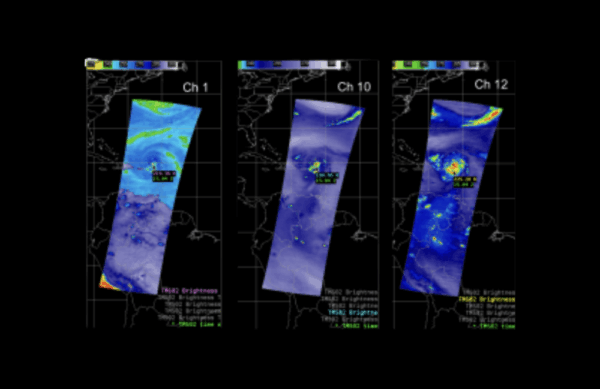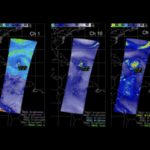The Wall Street Journal published an article/podcast yesterday entitled The U.S. Needs Weather Data. Satellite Companies Aren’t Collecting It.
The core message of the story is that the U.S. government is in need of a better weather data solution ASAP as extreme weather intensifies, and that the current state of data collection happening in the private sector isn’t cutting it.
Enter Tomorrow.io
First, our multi-sensor weather satellite constellation launches in just a few short months, and it will drastically improve global forecasting capabilities and weather intelligence.
Excitement for the constellation has been growing rapidly around the world as initially highlighted with a $20 million contract from the United States Air Force being announced last year, signaling a broader shift at the government level on commercial weather DaaS (data-as-a-service) and it’s not limited only to NOAA.
The impact of our constellation will include:
- Including data from both radars and microwave sounders
- Collecting multiple direct measurements, including the world’s first high-revisit global precipitation observations
- Ability to monitoring oceans and seas
- Complete global coverage
- Near real-time refresh rates
Second, NOAA and Tomorrow.io recently entered into a cooperative research and development agreement (“CRADA”) with the National Oceanic and Atmospheric Administration (“NOAA”) to analyze data to be provided by Tomorrow.io weather satellites, assess its impact on NOAA forecasts, and evaluate use of the data in NOAA’s weather models. Tomorrow.io plans to launch its first satellites starting in late 2022, with a full constellation expected to be in orbit by 2024.
Third, NOAA recently selected Tomorow.io in addition to Raytheon to develop NOAA’s future forecasting system that would be based on cloud computing and enable much broader community engagement and rapid model improvement. NOAA announced that RI&S was chosen to design and develop EPIC, an extramural center that will unite academia, industry and government to create the most user-accessible and comprehensive Earth modeling system.
The end takeaway here is that:
- The current state of weather forecasting capabilities is not good enough for any person, business or government in the world
- The technology Tomorrow.io is launching as we move into 2023 will completely revolutionize the world’s ability to forecast weather at any point (land and sea) on earth
- Given all the technology out there in the world today, what Tomorrow.io is currently putting out is recognized as the most advanced and innovative
The change has already begun. The revolution is right around the corner, and it can’t come soon enough.






